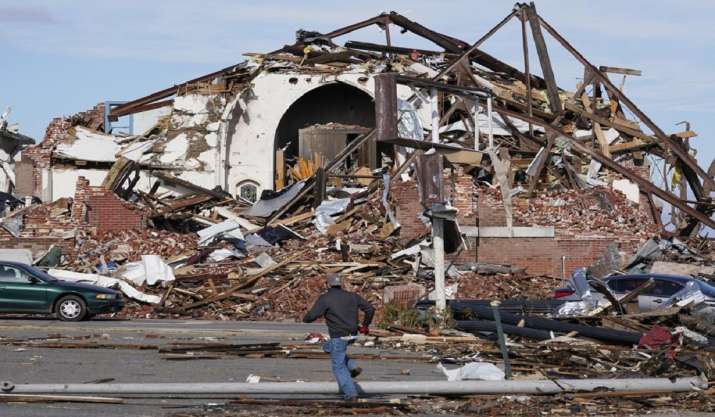Is there a connection between the US tornado outbreak and climate change?
Tornadoes are ripping through and causing havoc in the US. Additionally, the La Nina weather patterns are triggering more. Read to know if there is a connection between the US tornado outbreak and climate change. US tornado outbreak and its path of destruction While tornadoes are unusual in December, they are not entirely unheard of. […]


Tornadoes are ripping through and causing havoc in the US. Additionally, the La Nina weather patterns are triggering more. Read to know if there is a connection between the US tornado outbreak and climate change.
US tornado outbreak and its path of destruction

While tornadoes are unusual in December, they are not entirely unheard of. However, the path length and ferocity of Friday’s tornadoes are truly shocking. According to experts, one of the tornadoes broke an almost a century-old record of how long a tornado ‘stayed on the ground in a path of destruction. “One word: remarkable; unbelievable would be another,” said Victor Gensini. Victor Gensini is a professor of meteorologist at Illinois University. “It was really a late spring type of setup in the middle of December,” he added.
Relation between tornadoes and climate change

Warm weather was an important ingredient for the US tornado outbreak. However, researchers and meteorologists are not sure if climate change was just as important. According to researchers, figuring out how climate change is affecting tornado frequency is a complicated and evolving field. However, they know that atmospheric conditions are aiding in increasing such outbreaks, especially in the winter as the planet is warming. Additionally, here is a shift of the tornado alley, further towards the east and away from the Kansas-Oklahoma region.
“When considerable variation in the wind is found over the lowest few thousand feet of the atmosphere, tornado-producing supercell thunderstorms are possible. That’s what we had yesterday,” explained Paul Markowski. Paul Markowski is a professor of meteorology at Penn State University. This time was an exception. “But usually, there’s not a lot of instability in the winter that’s needed for tornadoes because the air isn’t as warm and humid,” stated Professor Gensini. Warm weather is “becoming more common because we have a lot warmer air masses in the cool season that can support these types of severe weather outbreaks,” he added.
What conditions are responsible for a tornado of this magnitude?

According to meteorologists the spring-like temperatures across the Midwest and South US in winter helped in bringing moist and warm air that helped in the formation of the thunderstorms. La Nina is one of the major players for changing the temperature as it brings in warmer air. Additionally, researchers believe that warm and atypical weather during the winter is going to be more common as the planet’s temperature rises.
“The worst-case scenario happened. Warm air in the cold season, middle of the night,” said John Gordon. Gordon is a meteorologist with the National Weather Service in Louisville, Kentucky. According to experts, once a storm forms, strong winds shear and prevent them from dissipating. “To get a long path length, you have to have a fast-moving storm. This storm was moving well over 50 miles (80 km) per hour for a majority of its life,” Gensini said.
This article Is there a connection between the US tornado outbreak and climate change? appeared first on BreezyScroll.
Read more on BreezyScroll.


